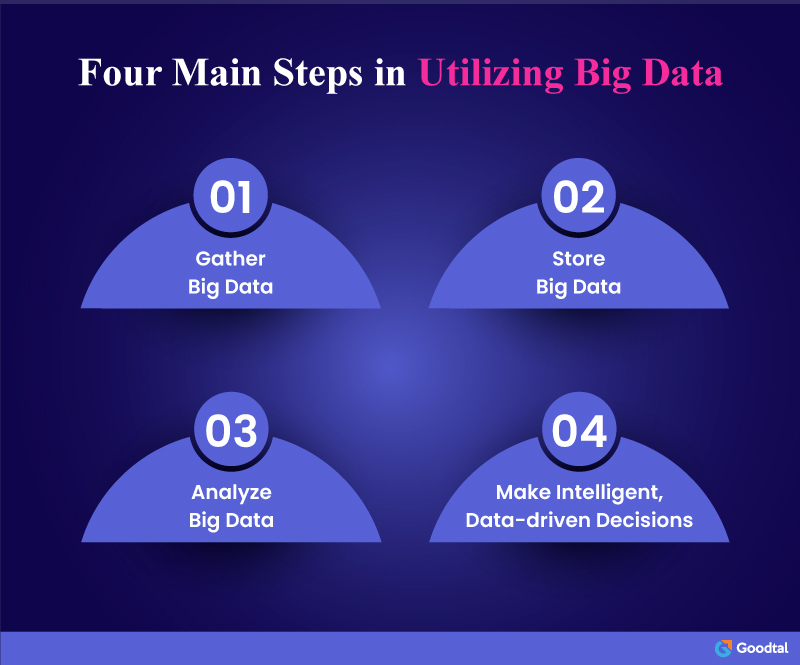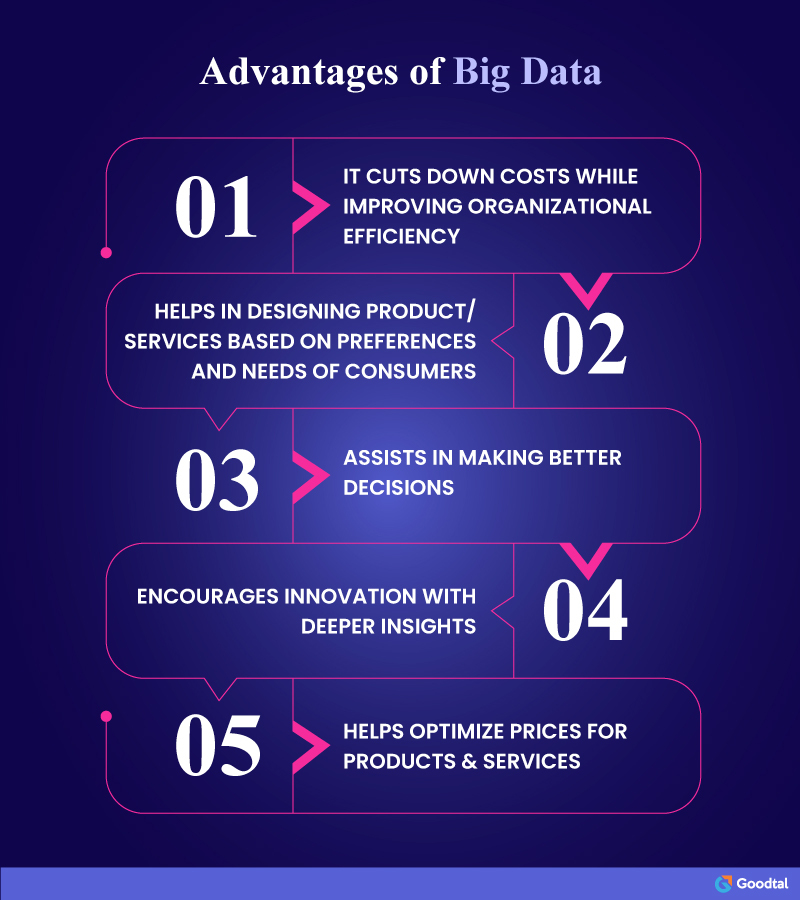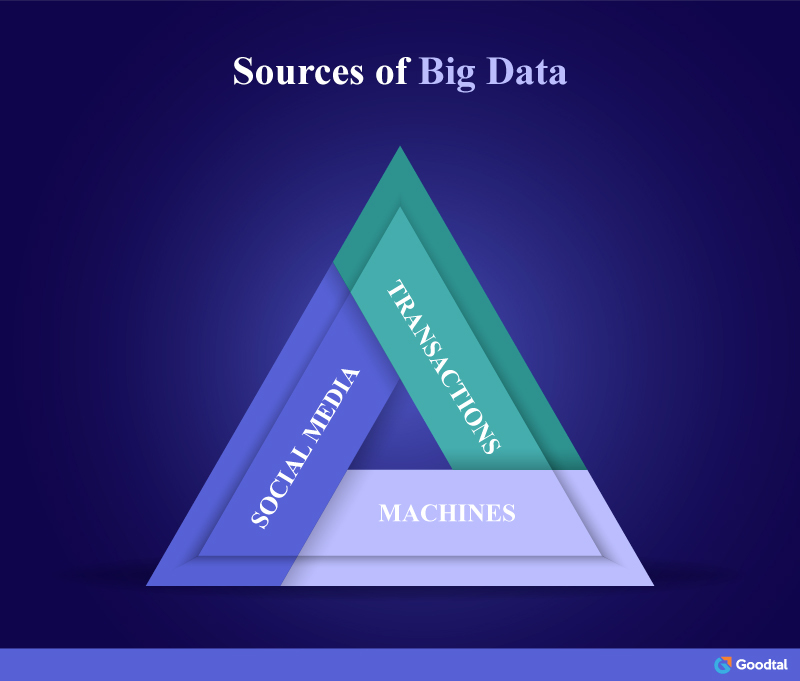
The world has gone digital, with smartphones, tablets, laptops, personal computers, and other devices generating petabytes of data every second. Data is considered precious these days, as it can give insights into consumer behavior, weather patterns, traffic movement, agricultural production, medical diagnostics, and many other domains. Big Data is called massive, not only because of the vast amount of data but also due to its complexity & variety. Data without analysis and interpretation is meaningless, which is when Big Data developers come into the picture.
Big Data developers are in demand because they can analyze tons of data within a matter of hours by using software tools. Analyzing such humongous data sets will take days, months, or years if humans are given the same task. This analysis leads to insights that can be used to make business decisions or for other domains.
“Global Big Data Analytics market is expected to reach a revenue of USD 68 billion by 2025 from USD 15 billion in 2019.”-Statista
Evolution of Big Data
The amount of data generated over time has risen exponentially over the last few years. In 2020, it was estimated that 64.2 Zettabytes of data was created, and data generated over the next five years will be greater than twice the amount made since the beginning of the digital age. The onboard computer had less than 80 KB of memory when the Apollo spaceship took off for the moon.
Sources of Big Data
Transactions
This data source is amongst the fastest moving & growing types. Banks themselves generate a massive amount of data, with millions of transactions taking place every second across the world. eCommerce companies also create a lot of data with every purchase. This Data is primarily unstructured and difficult to process as it consists of numbers, words, images, comments, and symbols.
Machines
Machines & Internet of Things (IoT) devices are fitted with sensors that can store and transmit data. This generates a lot of data regarding device/machine use and the state of the equipment. Examples include washing machines, traffic signals, medical devices, satellites, manufacturing plants, and automobiles. All these generate a vast amount of data, which is complex in nature.
Social Media
Social media apps & websites generate a lot of data with millions of users worldwide. This Data comprises comments, photographs, audio, videos, infographics, etc. The number of social media users keeps on increasing, which means that more data will be generated. Although trends in social media keep changing quite rapidly, the overall number of users keeps growing.
How Big Data Works
Big Data analysis can provide actionable insights, improving business decisions. Data that is not analyzed is of no use, and companies should ensure that their systems can gather, store and analyze Big Data.
Four Main Steps in Utilizing Big Data:

1. Gather Big Data
Much of Big Data comprises massive sets of unstructured data, which is coming from different sources, and the rate is not consistent. Traditional Data Base Management Systems are not equipped to handle vast amounts of Data. Modern-day Data requires in-memory systems equipped with software solutions capable of gathering Big Data.
2. Store Big Data
As the name suggests, Big Data is vast and requires dedicated storage resources. Many companies have on-premise storage to cut-down costs and meet their data processing needs simultaneously. Big Data analysis should not be restricted by size and memory restrictions. Companies should go for cloud storage in their Big Data models.
3. Analyze Big Data
Analyzing such a vast amount of unstructured Data is humanly impossible, and therefore the use of Artificial Intelligence is required. One of the five ‘V’s of Big Data, velocity is most important. Insights are of no use if they come late and cannot be utilized. Analytic tools should be self-optimizing and able to learn regularly. This can only be achieved by Artificial Intelligence & modern databases.
4. Make Intelligent, Data-driven Decisions
Data that is trusted and well-managed leads to trusted analytics and trusted decisions. The company needs to leverage data to make informed decisions rather than gut feelings. Data-driven organizations perform much better and are operationally more predictable and profitable.
For more reading on Big Data Click Here
Advantages of Big Data

Principal Big Data Programming Languages
Python Programming Language
It has been estimated that there are nearly 5 million python users worldwide, making it one of the most popular programming languages. Even NASA uses Python for programming its space equipment.
Python is relatively easy to learn, thus making it more popular amongst beginners. Let’s discuss what Python’s role in Big Data analysis is.
- Python is universal and can be used to download, clean, and send data. The data can be presented in the form of a website, making use of libraries such as Bokeh and Django.
- It is an ideal language for expansion as it has several high-quality libraries. Examples include Pandas, Numpy, Bokeh, Tensorflow, and Django.
- Python is relatively easy to learn due to its natural languages like syntax and the high activity of the Python environment.
- Python is not the only programming language for Big Data, but it is the most preferred in data science. It has overtaken R in recent years as the number one programming language for Data Science. The language is stable & predictable as far as the development cycle is concerned.
R Programming Language
R is used for statistical computing as well as graphics. It is used by data miners, statisticians, and bioinformaticians. Its data structures include vectors, array lists, and data frames. R is an interpreted language; for example, if a user types 2+2 at the R command prompt and presses enter, four will be displayed. It can be compared with other statistical packages like SAS, SPSS, and Stata. However, R is freely available at no charge. The language has many capabilities and is quite advanced, but it is more challenging to learn than Python. The number of public libraries for Python is greater, along with community support.

Java Programming Language
Java is one of the oldest programming languages known for its versatility and unifying data science techniques. Hadoop HDFS, used for Big Data applications, is entirely written in Java. The language is also used for Apache Camel, Apache Kafka, and Apatar, which are used for data extraction, transformation, and loading in a Big Data environment.
Scala Programming Language
Scala is a high-level open-source programming language part of the Java Virtual Machine ecosystem. It is more prevalent in the Finance industry and requires much less code than Java. The word Scala has been used to indicate its scalability, which means its usability for Big Data.
Experts believe that, unlike SQL, Python, and R; Scala and Java are not ideal for Big Data applications as they are pure programming languages. The number of Data Analysis libraries is also lesser than Python. Although Apache Spark, a cluster-computing framework for Big Data applications, is entirely written in Scala.
To Conclude…
The choice of language for Big Data entirely depends on your requirements. Whether it is easy to learn Python or more conventional Java, the selection will depend on your needs. Having discussed all the languages that can be used for Big Data, You will be in a better position to make the decision. In case you want to outsource your requirement for Big Data, Goodtal provides you with a list of companies that specialize in the same. The industries they serve, location, number of employees, and hourly rates are also mentioned.

